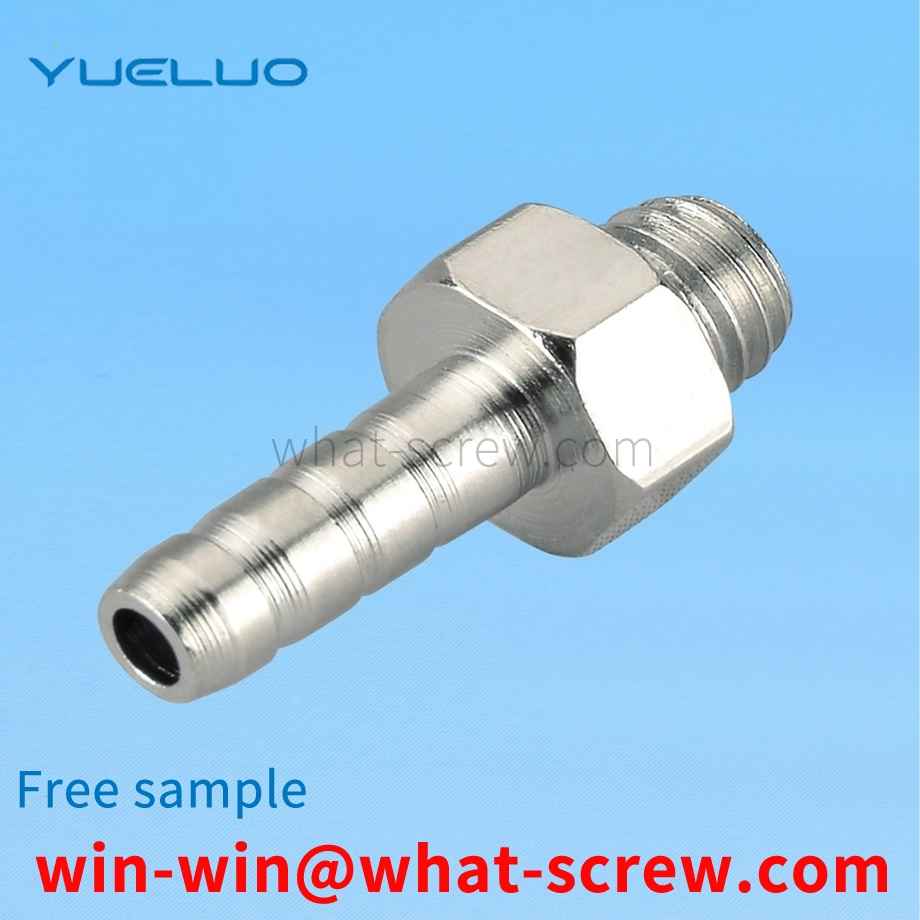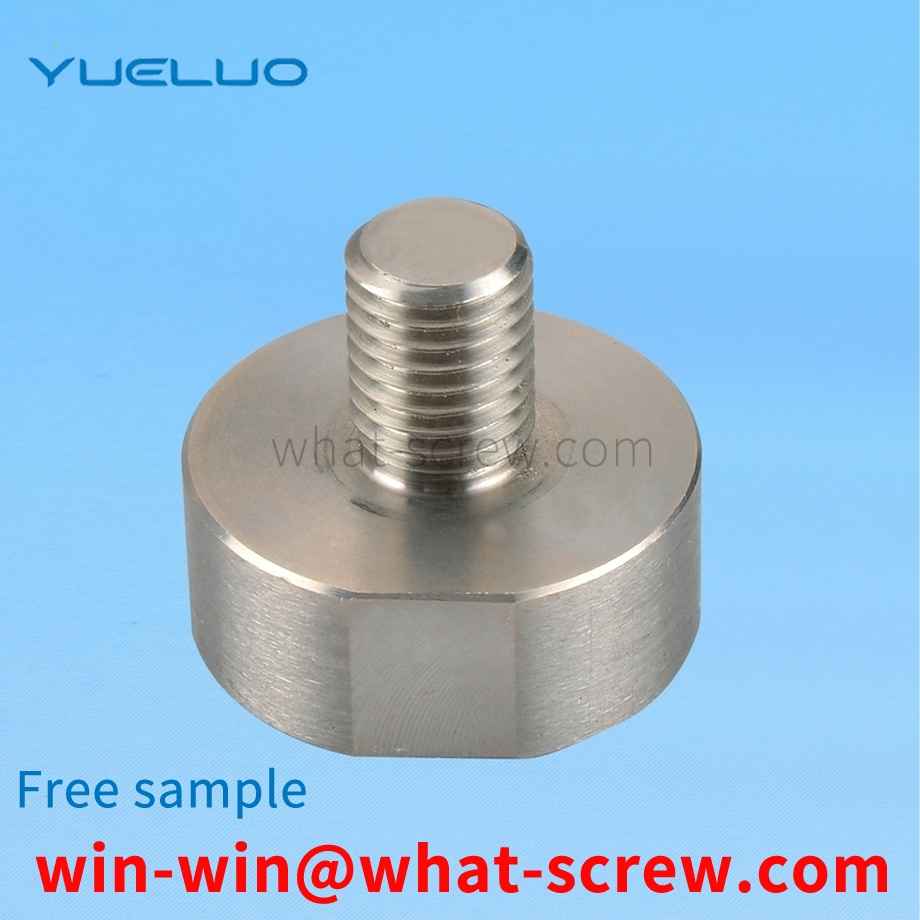In the fastening connection parts and parts assembly of various equipment and tooling, if the screw and nut anti-loosening treatment is required, there is a contradiction between anti-loosening and tightening or tightening and loosening. For example, the resistance is large when tightening. , or the resistance is large when loosening, or the anti-loosening effect is not good, or the service life is short, and it will be scrapped after 2 to 3 times of use. In a word, all kinds of anti-loosening nuts have the above problems at present. Therefore, it is necessary to utilise a new type of anti-loosening nut with low resistance when tightening or loosening, but with better anti-loosening effect and long service life.
rivet is a nail-shaped object used to join two parts or components with a through hole and a cap on one end. In riveting, the riveted parts are connected by their own deformation or interference. There are many types of rivets, and they are informal. In today's product production, the slot holes on the same mounting surface often have different mounting slot depths. If a mechanical tool is used for quick screwing and installation, it will directly bring destructive effects to the brittle products, resulting in When the product is cracked and damaged, when connecting plastic shells, lightweight boards, insulating materials, circuit boards, or any other thin and light materials, the requirements for the installation process are also relatively high. The gripping force and bonding force of rivets are weaker than those of rivets that are screwed and installed by machinery. The bonding strength of rivets used in manual operations needs to be enhanced. The rivet structure needs to be improved and enhanced when installing thin, light-weight materials.
Slotted Round Head Wood Screws GB 99-86 Slotted Countersunk Head Wood Screws GB 100-86 Slotted Half Countersunk Head Wood Screws GB 101-86 Hexagon Head Wood Screws GB 102-86 Cross Recessed Round Head Wood Screws GB 950-86 Cross Slotted countersunk head wood screws GB 951-86 Cross recessed countersunk head wood screws GB 952-86
total of 13 domestic automotive fastener companies were interviewed and investigated in this survey, and all the companies under investigation have passed the TS16949 system certification. An average car has about 1500 fasteners, and the total bolt assembly time for each car is about 2.5~3.2h. It can be seen that the variety and quality of fasteners have an important impact on the level of the main engine and the quality of the vehicle. This article analyzes the localization of high-strength threaded fasteners and the management of supply quality from the perspective of the production process of high-strength threaded fasteners. Product flow of high-strength threaded fasteners The production process of high-strength threaded fasteners is raw material transformation → cold heading forming → thread processing (thread rolling or thread rolling) → heat treatment → surface treatment → sorting and packaging, generally used above grade 10.9 Thread rolling process after heat treatment. The steel grades commonly used for high-strength bolts of automotive fastener materials are 35 steel, 45 steel, and ML35 steel for grade 8.8 bolts; 35CrMo for grade 10.9 bolts; 40Cr; 35CrMo, 42CrMo, and SCM435 for grade 12.9 bolts. The raw materials for domestic fasteners are basically in the hot-rolled state, while the steel for fasteners produced in Japan and other countries is basically in the state of direct cold heading. Users do not need pretreatment, which can reduce costs from the link. Common failure modes of fastener failure are assembly elongation, fatigue fracture, and delayed fracture. In addition to the material, the quality of cold heading forming and thread processing (thread rolling or thread rolling, tapping) threaded fasteners, forming equipment and thread processing equipment and molds (production process and equipment) are the key factors to ensure their quality. Especially in the state of large-scale and multi-variety supply, automotive fasteners that require high machining accuracy, how to ensure product consistency and defect prevention is one of the problems faced by fastener production. For the cold heading equipment and thread processing equipment of the investigated companies, domestic equipment accounts for about 40%, Taiwan equipment accounts for 50%, and imported (Europe, America, Japan) equipment accounts for about 10%; Partial folding, thread streamline upsetting, tooth wrinkles and cracks, etc. Domestic fastener factories are limited by capital or other reasons, and most of them use domestic equipment and Taiwan equipment to produce fasteners for automobiles. To ensure the dimensional tolerance and geometric tolerance of large-scale production of high-end fastener products, online monitoring should be increased. Means and mold making level. Eliminate unqualified products in production, so as to ensure the assembly quality of OEMs and OEMs. [1] About 80% of the surveyed fastener enterprises have heat treatment equipment, and most of them use Taiwan heat treatment process lines; the process line equipment is a continuous mesh belt furnace with atmosphere protection, and the atmosphere, temperature and process parameters are controlled by a computer. The high-strength fastener industry is a relatively competitive industry. If we want to have a thorough and objective analysis of the technology and market of the high-strength fastener industry, we need to start from the following aspects: domestic high-strength fasteners Industry and Enterprise Competition Pattern High-strength Fastener Industry Industrial Policy High-strength Fastener Product Technical Standards and Regulations my country's High-strength Fastener Product Technology Competition Pattern Dynamics Regarding these six aspects, many domestic research institutions have conducted in-depth research and research, and many institutions have long been engaged in research and research in this industry.
Screws are commonly found in machinery, electrical appliances and buildings. They are generally made of metal or plastic, cylindrical in shape, and grooves engraved on the surface are called screw threads. The main function of the screw is to join two objects, or to fix the position of an object. Screws can often be removed or re-tightened at will without compromising their efficiency. Generally, the diameter of the top of the screw is larger, and the common ones are round, square or regular hexagon. If the top is regular hexagon, you can turn the screw with a wrench. If the top is round, there will also be grooves on the front of the top, which is convenient for use screwdriver to turn the screw. *The common grooves are one-shaped, cross-shaped and square, and there are other shapes. The grooves of the existing screws are often easy to wear, which makes the screws inconvenient to use and causes the screws to be scrapped. In addition, because the screws have no chip removal The structure makes it difficult for the screw to penetrate other objects, which affects the efficiency of the screw.
We have many years of experience in the production and sales of screws, nuts, flat washers, etc. The main products are: blackened T-groove bolts, color washers, nylon pull rivets, small semi-circular head low square neck bolts and other products, we can provide you with The right fastener solution for you.



















 Service Hotline
Service Hotline




